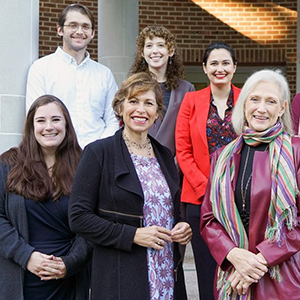The latest NIEHS Distinguished Lecture featured Sir Michael Marmot, Ph.D., professor of Epidemiology and Public Health at University College London (UCL) and director of UCL’s Institute of Health Equity. Marmot, an expert on the social determinants of health, presented 'Social Justice and Health Equity' June 8. Chandra Jackson, Ph.D., head of the NIEHS Social and Environmental Determinants of Health Equity Group, hosted the virtual seminar.
Marmot has led several research groups over the years and chaired commissions with the purpose of translating research into policy and practice, namely the World Health Organization (WHO) Commission on Social Determinants of Health in 2008, the WHO Pan-American Health Organization’s Commission on Equity and Health Inequalities in the Americas in 2015, and the WHO Eastern Mediterranean Region’s Commission on the Social Determinants of Health in 2019.
 “We can use health as a marker for how well society is doing,” Marmot said. “If health has stopped improving, society has stopped improving.” (Photo courtesy of Sir Michael Marmot)
“We can use health as a marker for how well society is doing,” Marmot said. “If health has stopped improving, society has stopped improving.” (Photo courtesy of Sir Michael Marmot)Six key recommendations
Gordon Brown, Ph.D., then Prime Minister of the United Kingdom, asked Marmot to determine how conclusions and recommendations of the 2008 WHO report could be applied to England. That led to the publication of The Marmot Review: Fair Society, Healthy Lives in 2010. The report listed six recommendations that would close the health gap between rich and poor, focusing on the following:
- Importance of early childhood development.
- Education and lifelong learning.
- Employment and working conditions.
- Everyone should have the minimum income necessary for a healthy life.
- Importance of environments in which people live and work.
- Taking a social causation approach to disease prevention.
Decrease in life expectancy
In the decade following publication of that report, Marmot gave lectures and offered graduate courses on these six social determinants, hoping that policymakers in London would incorporate them into new laws. Their inaction prompted him to publish Health Equity in England: The Marmot Review Ten Years On. It was February 2020, just before the world became ravaged by the pandemic. His new report determined that 2010 had been a pivotal year.
'Life expectancy in England from 1890 had been improving for men and women one year for every four years, but in 2010, there was a sharp break in the curve, and the rate of increase slowed dramatically and almost ground to a halt,' Marmot said. 'What happened in 2010?'
According to Marmot, the conservative British government elected that year reduced spending on public sector programs. The proportion of gross domestic product (GDP) spent on public sector programs went from 42% in 2009-2010 and decreased steadily to 35% by 2018-2019.
He said that at the beginning of the 2010s, tax levels were in the middle of the European range. By the end, the U.K. was close to the lower end, at 35%. Also, in Marmot’s view, the Minister of Finance altered the welfare system in a way that negatively affected families and children.
'As a result of these changes, if you were in the bottom 10% of household income, your income would decrease by more than 15%,' Marmot added. 'The richer you were, the less the reduction.'
Although Marmot said he does not have a definitive answer, he suggested that it is plausible that the spending cuts and readjustments to the tax and welfare system led to the slowdown of life expectancy and an increase in health inequities.
Social injustice
Marmot said COVID-19 exposed the underlying inequalities in society and amplified them, so he only waited 10 months to release his next report, Build Back Fairer: The COVID-19 Marmot Review (see first sidebar). He found that the causes of mortality inequality in COVID-19 overlapped with the causes of health inequality in general.
The solution, Marmot contends, is dealing with structural racism, which he said acts through socioeconomic disadvantage (see second sidebar).
“We should put a fair distribution of health and well-being at the heart of all government policy and realize that social injustice is killing people on a grand scale,” Marmot added.









